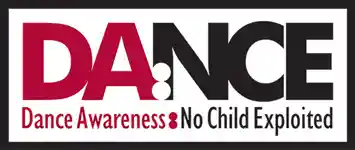 Guest Article: Erin Sanchez
Guest Article: Erin Sanchez
How can we ensure as teachers that we create healthy environments for young dancers who want to dance as a professional career? I believe that all of us who are working with dancers have a responsibility to create environments that will not only protect them from harm but will also give them the best chance to experience the achievement, success, and enjoyment that dance can bring.
I met Jamie when she was 10. I was a young teacher, with just a few years of teaching experience. Ever since she was very young, Jamie had been a constant mover. From her very first class, she’d been in love with dance. I can still remember now the light in Jamie’s eyes as she danced, and her smile at the end of each lesson as we gathered around the piano.
We’ve all known children like Jamie, and I’m delighted and inspired when I think of how many young people there are in the world who have experience this deep love for and joy from dance.
Jamie dreamed of dancing professionally, and she told me and her parents (and anyone who would listen!) that she was going to be a dancer when she was grown up. She started to do more dancing, aiming to improve her technique, creativity, and performance skills. As she got older, I saw her more and more, not just in my class, but taking almost everything that was offered at the school. Our little school had an annual recital, and I clearly remember one year when Jamie was in most of the pieces in the show. Every rehearsal, she was there – we even had to change the order of the show so she could change her costume and not miss her next entrance. Only a few years later, Jamie was dancing at our studio and another in town, still performing in our recital, but also several amateur and professional shows throughout the year, alongside her high school studies. She seemed to be gaining not only in skill, but also artistry, and it was undeniable that she was growing into a beautiful young woman and dancer.
I left the city to pursue my career around this time, and I was away for several years. One holiday, I was back in town, and I saw Jamie in a class I was taking. She had grown up and was a beautiful and skilled dancer. I was so impressed with her technique, it took me a little while to notice that as I watched her dancing, something looked different. It wasn’t just her maturity, technique, and skill that had changed – there was something different in her eyes. There was a hard coldness in her look as she moved, and there were new things too when she wasn’t dancing. Here an exasperated sigh falling out of a turn, there a cringing expression when she caught an angle in the mirror that displeased her. As I watched her, I felt a confusing mix of emotions. A mixture of sadness, anxiety, and strangely, remorse – not at all what I had felt at first seeing this beautiful mature dancer. I remembered that spark in her eye and her smile all those years at the piano. What had happened to that little girl?
I suppose what I’m describing might sound like quite a normal progression for those young dancers that decide to pursue a career in dance. Their trajectory will lead them to dance more hours with more intensity, and with more focus on improving their skills. And as they dance more, there is less time for other things in their lives – normal things like friendships and school experiences. And as they focus more on improving their skills, they focus perhaps more on what they’re getting wrong and less on their own enjoyment, on their own joy in the movement.
If you’ve ever seen the Pixar movie ‘Soul’ which follows the life and afterlife of a jazz music teacher, you may remember the ‘Lost Souls’ who wander aimlessly, lost to their obsessions. Jamie reminded me of those dark figures. She was unable to see any of the beauty, the strength, the passion, or the joy that dance used to bring her.
How could doing more of what she loved have turned Jamie into someone who looked like this? You might reply, ‘She loves it, so she wants to do it well,’ or perhaps you might think that she still loves dance, but she shows it differently – through determination rather than joy.
Many years later, I still reflect on this experience. I’ve learned a lot about health since my days teaching and dancing; things I wish I would have known before. I felt remorseful watching Jamie that day because I felt I was somehow responsible for the loss of joy I saw in her, and I still think this. Teachers act as a guide for their students. I had a responsibility to that child that I knew.
When we talk about abuse, we often think of actions of significant and unquestionable harm. We think of a dancer being shouted at or physically hit, a teacher suggesting a child wears a sexualised costume, or an artistic director telling a dancer they are too fat to become a professional. But we forget what happens before the action, and we forget the more subtle harms.
The cognitive approach to psychology focusses on the theory that our minds process the stimuli we encounter, and via this mediation, our thoughts lead us to respond in certain ways to things that happen. Our thoughts led us to act, and the resulting words, behaviours, expressions – even aimed at ourselves – are witnessed by others and go on to act as stimuli for their thoughts and subsequent responses and behaviours.

Image caption: The Cognitive Model from Understanding CBT. (2023) The Beck Institute https://beckinstitute.org/about/understanding-cbt/
When you apply this to teaching, it’s so easy to follow in the footsteps of those who have gone before us. When I was teaching Jamie, I had a certain set of thoughts and beliefs about what it took to become a professional dancer which may have influenced the way I behaved as a teacher. I thought the way to become a professional dancer was to work – all the time. I thought the way to become a professional was to be the best, and so I focussed my attention on how others were performing – and how I compared to them. I thought the way to become a professional was to look like someone else who was already a professional, so I set out to look as ‘right’ as I could. (That led me to developing an eating disorder, and I hope that Jamie escaped this fate.) I also thought that being ‘good’ wasn’t about enjoyment, it was about whether you were progressing in ways others could see – more performances, training with the right people, being employed by the right people, being centre stage.
The psychologist Prof Joan Duda talks about the motivational climate we create as dance teachers and how it is influenced by our behaviours. The motivational climate is a kind of prevailing weather system, created by the actions of the teacher, that impacts dancers’ wellbeing as well as their performance. The theory of motivational climate also draws on Nicholl’s (1989) theory that our environment impacts the kinds of goals we set for ourselves. We as teachers can create environments that foster intrinsic motivations, or doing things because we love them or value what we gain from our engagement with them. In these environments, the teacher communicates that self-referenced development is the goal, every person has worth and value, we reward effort (not performance outcomes), and mistakes are a natural and necessary part of development. In these environments dancers experience increased feelings of creativity (Miulli and Nordin Bates, 2011), lower anxiety (Carr and Wyon 2003), less dieting, perfectionism, and weight-related peer pressure, and higher self-esteem (DeBruin et al. 2009).
Alternatively, teachers can create environments focussed on being the best and competition with others, where mistakes are a sign of weakness, and natural talent is rewarded. Research with dancers suggests that dancers in addition to experiencing decreased creativity (Miulli and Nordin Bates, 2011), increased anxiety (Carr and Wyon 2003), increased dieting, perfectionism, and weight-related peer pressure, and lower self-esteem (DeBruin et al. 2009), dancers in these environments also report more injuries (Kaufmann, et al 2021) and poorer wellbeing and relationships (Quested and Duda, 2009).
Reflecting on the impact of the way I taught as a young teacher; I fear that my beliefs and resulting actions created a motivational climate that negatively impacted Jamie. Retrospectively, I see my belief was that to be great you had to be more driven than joyful, more focussed on being the best than on being yourself, and more absorbed with what they can do, not what they want to do, in fact becoming one of those “lost souls”.
Research among athletes has recently explored the concept of thriving; the joint experience of learning and success that is underpinned by a sense of wellbeing or vitality (Brown, Arnold, and Standage, 2017). Thriving has also been investigated as an outcome of experiencing, and subsequently overcoming challenge. Although thriving is not the same as an experience of joy, achievement can be a route to wellbeing through meeting our purpose and accomplishment.
Challenge is a tricky word. One possible argument for the obsessive drive that is so much a part of intensive, pre-professional dance training is the mantra that being a dancer is extremely difficult. We believe that we must be prepared to face these challenges by pushing ourselves ever harder, with no limits, and no rest. I have heard dancers recall teachers, choreographers, or directors saying ‘I am preparing you for the industry’ as an explanation for harsh treatment. The message here is twofold; that the dance industry is abusive, and that through exposing dancers to abusive environments in training, we are setting them up to be able to handle them successfully in the future. This is not ethical, appropriate, or effective.
Instead, our messages should be that a professional career in the dance industry is a challenging and competitive, and that we as teachers will support dancers to develop, test, and tweak their skills to meet these challenges.
By increasing their skills, we can create opportunities for dancers to experience growing confidence, capability, and enjoyment in their careers in dance. There are personal and environmental supports to enable thriving including intrinsic motivation, a positive and proactive personality, social support, trusting relationships, and environments that balance high expectations with appropriate boundaries (Brown, Arnold, Fletcher, and Standage, 2017).
In my teaching practices now, I think of Jamie often. I remember the spark in her eyes, and I also remember her dedication to becoming a beautiful, mature dancer. She taught me to be more aware of the need to provide the ingredients to prepare dancers to face challenges, armed in advance with a range of skills and supports. I know I want my students who are planning to have a professional career to be able to navigate stress, cope with setbacks, and respond effectively to environments that are challenging. I am also always thinking of ways I can give them a chance experience enjoyment and joy, especially when they are working towards developing their skills.
——
Brown, D.J., Arnold, R., Fletcher, D. and Standage, M., 2017. Human thriving. European Psychologist.
Carr, S., Wyon, M. The Impact of Motivational Climate on Dance Students’ Achievement Goals, Trait Anxiety, and Perfectionism Journal of Dance Medicine & Science, Volume 7,Number 4, December 2003 , pp. 105-114(10)
De Bruin, Karin A.P., Bakker, F.C., & Oudejans, R.R.D. (2009). Achievement goal theory and disordered eating: Relationships of disordered eating with goal orientations and motivational climate in female gymnasts and dancers. Psychology of Sport and Exercise, 10, 72-79.
Deci, E. L., & Ryan, R. M. (2000). The ‘what’ and ‘why’ of goal pursuits: Human needs and the self-determination of behavior. Psychological Inquiry,11, 227-268.
Duda, J. L. & Kim, M. (1997) Perceptions of the Motivational Climate, Psychological Characteristics, and Attitudes Toward Eating Among Young Female Gymnasts Journal of Sport & Exercise Psychology, 19, S48-S48.
Duda, J. L., Chi, L., Newton, M. L., Walling, M. D. & Catley, D. (1995). Task and ego orientation and intrinsic motivation in sport. International Journal of Sport Psychology, 26, 40-63.
Eccles, J. S., & Wigfield, A. (2002). Motivational beliefs, values, and goals. Annual Review of Psychology, 53, 109-132.
Quested, E., & Duda, J. L. (2009). Perceptions of the motivational climate, need satisfaction, and indices of well-and ill-being among hip hop dancers. Journal of Dance Medicine and Science, 13 (1), 10-19.
Quested E, Duda JL. (2010) Exploring the social-environmental determinants of well-and ill-being in dancers: A test of basic needs theory. J Sport ExercPsychol.32(1):39-60.
Miulli MK. and Nordin-Bates, S. (2011) Motivational Climates: What They Are, and Why They Matter http://www.iadms.org/associations/2991/files/info/Bulletin_for_Teachers_3-2_pp5-7_Miulli.pdf
Nordin-Bates, S.M., Quested, E., Walker, I.J., & Redding, E. (2012). Climate change in the dance studio: Findings from the UK Centres for Advanced Training. Sport, Exercise and Performance Psychology, 1(1), 3-16.
Nordin SM, Walker IJ, Redding E, Quested E, Duda JL. (2009) Motivational climate and perfectionism among young dancers: findings from the UK Centres for Advanced Training. Presented at the International Society for Sport Psychology (ISSP), Marrakesh, Morocco.
Kaufmann, J.E., Nelissen, R.G., Appleton, P.R. and Gademan, M.G., 2021. Perceptions of motivational climate and association with musculoskeletal injuries in ballet dancers. Medical Problems of Performing Artists, 36(3), pp.187-198.
 Erin Sanchez is an advocate, educator, and applied researcher with a passion for mental health and talent development in dance. As Manager of Dancers’ Health, Wellbeing, and Performance and National Institute of Dance Medicine and Science (NIDMS), she collaborates on initiatives to support sustainable and highly valued careers in dance and to improve dancers’ health, wellbeing and performance. In this role, she works with Safer Dance (https://www.dsswg.org.uk/) a collective promoting high standards of safeguarding in dance schools. She is also an executive group member of Personal Safety for Dance (https://www.personalsafetyfordance.com/) an international collective working to safeguard professional dancers. Her book, Performance Psychology for Dancers (https://shop.roh.org.uk/products/performance-psychology-for-dancers-book) with Prof Dave Collins and Dr Aine MacNamara, is a practical text for young dancers and parents.
Erin Sanchez is an advocate, educator, and applied researcher with a passion for mental health and talent development in dance. As Manager of Dancers’ Health, Wellbeing, and Performance and National Institute of Dance Medicine and Science (NIDMS), she collaborates on initiatives to support sustainable and highly valued careers in dance and to improve dancers’ health, wellbeing and performance. In this role, she works with Safer Dance (https://www.dsswg.org.uk/) a collective promoting high standards of safeguarding in dance schools. She is also an executive group member of Personal Safety for Dance (https://www.personalsafetyfordance.com/) an international collective working to safeguard professional dancers. Her book, Performance Psychology for Dancers (https://shop.roh.org.uk/products/performance-psychology-for-dancers-book) with Prof Dave Collins and Dr Aine MacNamara, is a practical text for young dancers and parents.



